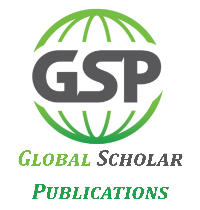Magnitude and factors associated with under nutrition among children on art in east Wollega zone, western Ethiopia, 2022
Department of Public health, Institute of Health Science, Nekemte, Oromia, Ethiopia.
Research Article
Global Journal of Research in Medicine and Dentistry, 2022, 01(01), 045-058.
Article DOI: 10.58175/gjrmd.2022.1.1.0027
Publication history:
Received on 11 September 2022; revised on 10 November 2022; accepted on 14 November 2022
Abstract:
Background: Under nutrition is defined as a pathological state resulting from insufficient food intake and repeated infectious diseases. Under nutrition is a global problem and the biggest threat to human life and economic progress. It is the main cause of child morbidity and mortality especially in sub-Saharan Africa including Ethiopia. The severity of the problem is even worse when children are infected with human immunodeficiency virus. Despite the significance of the problem, there were limited studies conducted in the study area.
Objective: To assess the magnitude and factor associated with under nutrition among children on ART in East Wollega zone,2022
Methods; Institutional based cross-sectional study design was employed to assess the magnitude and associated factors of under nutrition among under fifteen years children who are on ART at public health facility of East Wollega Zone,2022
Result: In this study the magnitude of malnutrition (WFH<-2 Z-score) was 36.8% with 95% CI (32.1, 41.8). Having acute disease two weeks before the survey (AOR=5.82, 95%CI:2.86,11.84), CD4 level (AOR= 1.85, 95%CI:1.06, 3.25), not treating water at home (AOR=3.30,95%CI:1.8, 6.05), follow up duration (AOR= 1.97, 95%CI: 1.11, 3.49), food insecurity (AOR=3.55, 95%CI: 2.03,6.19), and latrine unavailability (AOR=2.73, 95%CI: 1.39, 5.36) were statistically significant predictors of Under nutrition among children on antiretroviral therapy (ART) follow up.
Conclusion and recommendation: The prevalence of Under nutrition among children living with HIV/AIDS was found to be high. Having acute disease two weeks before the survey, CD4 level, not treating water at home, follow up duration, food insecurity, and latrine unavailability were found to be strongly associated with under nutrition among children on ART follow up. Hence, the public health care facilities should treat acute diseases early, timely measuring of their CD4 levels, providing health education on household water treatment, latrine utilization and feeding practices, and conduct continuous follow-up.
Keywords:
Magnitude; Risk factors; Under nutrition; Feeding practices
Full text article in PDF:
Copyright information:
Copyright © 2022 Author(s) retain the copyright of this article. This article is published under the terms of the Creative Commons Attribution Liscense 4.0
